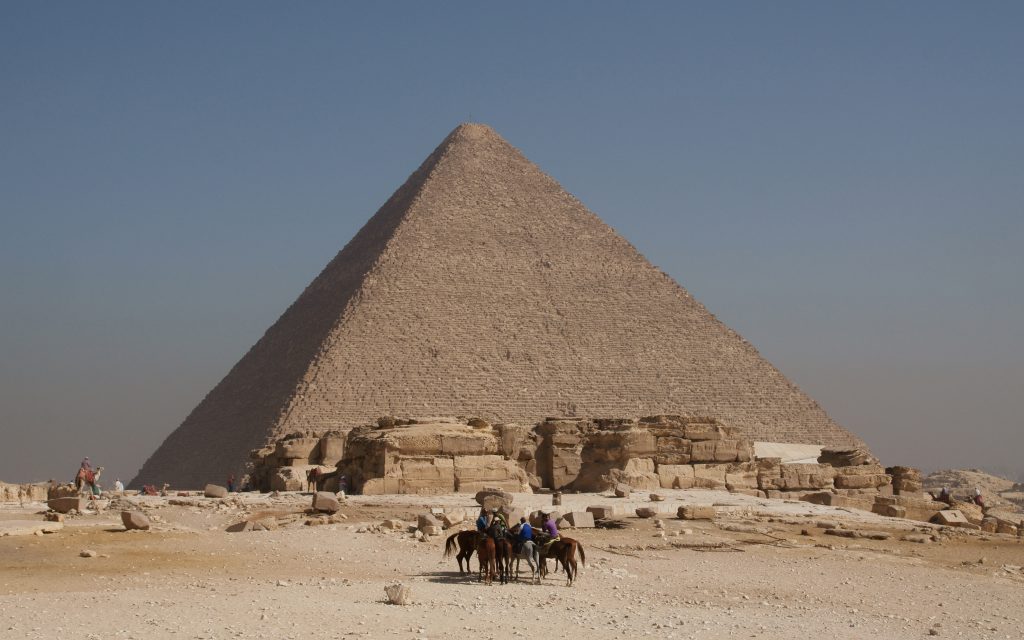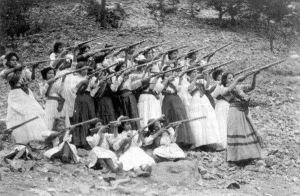I think that it is a given that humans have a bit of a fascination with death and everything that comes after, that is, if one even believes that there is anything that comes after death. In fact, one can find that this fascination can even be seen in ancient human societies, and of all of them there is none that shows more fascination with the dead than the great society of ancient Egypt, which built great monuments and sculptures to the dead, wrote guides for the dead to use on their journey through the afterlife, and mummified bodies so that the “Ka,” which was their concept of the soul, could travel and exist in the afterlife.

One of the most well known things about the ancient Egyptians are their mummies; but what exactly are mummies? They are not the man killing monsters that Hollywood films have come to portray them as, but are rather simply the preserved and mummified remains of a person. This leads us to the next question: why mummify the dead? The reason the dead where mummified is simple: without the body, the Ka cannot exist and the Ka is what allows one to travel and live in the afterlife.
The Ka itself is very much like the Christian concept of the soul, which is believed to go either to heaven or hell after death.1 According to Egyptian culture and religion, the Ka is the spirit-body. However, in order for it to exist, it must also have a physical body. So to insure that the dead would be able to go to the afterlife, the body was mummified so that it might stay behind as the Ka moved on to the afterlife.
While the Egyptians mummified the bodies to be sure that the Ka had a physical form in which it could reside, there was still an issue: tomb raiders. Tomb raiders plundered tombs and took the bodies of the dead, or defiled them, causing the Ka to become separated from its physical form. It is important to keep in mind that this was not really an issue for the poor members of society, but for the elite and pharaohs of ancient Egypt this was quite important.2
It is for this reason that the high elite of Egyptian society—mostly the pharaohs—had statues made and sculpted in their image. They believed that, if their tomb was raided and something happened to their body, the Ka simply moved from the body to the statue, which became the new physical form in which the Ka resided.3
Egyptian funerary texts are another aspect of the Egyptian culture that exhibits a fascination for the dead in ancient Egyptian culture. The funerary texts, called “Per en Bru” by the Egyptians, roughly translates to the Coming of Days. The texts themselves were very unique, each created with the intent of helping the deceased travel through the afterlife.4 In a sense, funerary texts were a kind of general guide or handbook, which consisted of a multitude of spells and information on the afterlife that was believed to help the Ka on its way to the new life.

Another thing that shows how fascinated the Egyptians were with the dead can be found in urns and canopic jars. It was not until the first explorations of the Egyptian tombs that archaeologist came to find the canopic jars, and it was not until they were opened that archaeologists learned that within these jars were the preserved organs of the dead.5 It was only due to the discovery of the funerary texts that archaeologists learned the reason for this. What was learned was that the organs were placed into the jars so that the Ka would be able to take them to the afterlife. However, not all organs were preserved in these jars, and not all of the ones that were preserved served a practical use. One example of this is the heart. In fact, the funerary texts detail how the Ka would carry the heart to Anubis, who would then place it on a scale to be weighed against a feather of Ra. Once place on the scale, the trial of judgement would begin; now there are some important things to know about this trial; first, the feather of Ra symbolizes purity and perfection; second, the heart represents the soul or Ka, so when the heart was placed on the scale, if it weighed more than the feather, that meant that the Ka was not pure, and Anubis would have his beast devour the heart, thus erasing the Ka. However, if the heart weighed less than the feather, that meant that the Ka was pure and could move on to its new live in the afterlife.
- Erik Hornung, The Ancient Egyptian Books of the Afterlife, David Lorton, translator (Cornell University Press, 1999), 154. ↵
- Jan Assmann, Death and Salvation in Ancient Egypt (Cornell University Press, 2005), 105. ↵
- Henri Frankfort, Ancient Egyptian Religion: An Interpretation (Courier Corporation, 2012), 96. ↵
- John H. Taylor, Death and the Afterlife in Ancient Egypt (University of Chicago Press, 2001), 196. ↵
- Ann Rosalie David, Handbook to Life in Ancient Egypt (London: Oxford University Press, 1999), 152. ↵



87 comments
Karen Brewer
I thought this article on Egyptian history interesting and well written. It is important to learn about our world’s history, and how we continue to learn more about our civilization.
Vern B
It is interesting to me the similarities across history and across the many civilizations of the world when it comes to not only the existence in an afterlife, but also that of a judgement (Ka and the Feather of Ra). We have seen this in many cultures from the Mayans, Celtics and the Egyptians as you discuss. With such diversity in time and space between these civilizations, it makes you wonder if it truly is borrowed history passed down and shared through generations of storytellers or a universal “common thread” to all mankind.
Trina
Very interesting information about how they judged if the “Ka” was pure or not and what happened if the heart weighed more then the feather. Great job.
George M.
Your ability to relate modern and Egyptian Science into a medium that explains the thoughts of people many years ago, is outstanding! You have peeked the interest of the reader and have them wanting to learn more. I look forward to your next submission.
Kristopher Mayers
I really enjoyed this article! This places a very unique spin on the concept of judgement in the afterlife of humans. This definitely sparks curiosity, and makes me want to know more about the ancient Egyptian society!
Melissa
Nice job! Interesting, and the mummified pic next to the Egyptian tomb was a good visual to refer to. Well done.
Catarina McDonough
It was an interesting article! I’ve always fadcinated by how the ancient Egyptians’ attitude towards death was. Death was simply a temporary interruptionin for ancient Egytians and they believe mummified was the only way to have an afterlife. It is always fun to read about ancient Egyptians history and their beliefs. Well done!
Kate Nelson
Very well written. I have always had a fascination with ancient Egypt and their burial rituals and thoughts of the afterlife.
Jay S.
Well written and researched article on mummification and Ancient Egypt. I was never aware that the wealthy had statues of themselves placed in their tombs to provide the ka a place to reside if their mummy was defiled. Very interesting.
Michelle
I am surprised you would write about questioning the afterlife in your article. Especially considering you go to a private Catholic University.